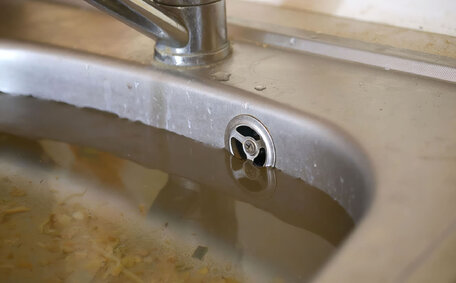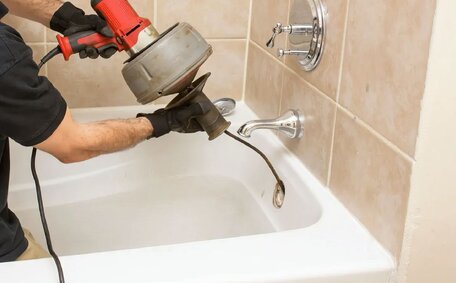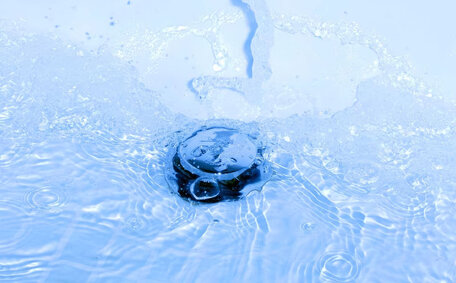Introduction to DIY Plumbing Maintenance
Keeping your home plumbing systems in good working order is essential to prevent leaks, clogs, and other potential plumbing disasters.
Our essential DIY plumbing maintenance guide offers homeowners strategies to save time and money, ensuring the smooth functioning of their plumbing pipes while avoiding costly disasters. This guide delivers key plumbing tips that will keep your pipes unobstructed and your water heater functioning effectively.
This guide covers pipe inspection, drain cleaning, fixture replacement, and recognising when to call a professional plumber, ensuring that your home’s drainage system stays in top shape.
This guide includes how to keep your drains clear, inspect your water heater, check for leaks, and other maintenance essentials. Proactive maintenance can prevent future complications, so apply these steps now to avoid problems down the track.
While some jobs need a professional plumber, adhering to these plumbing safety tips is a smart maintenance strategy for homeowners.
By following these guidelines, you can keep your plumbing in optimal condition, extend pipe lifespan, prevent clogs, and detect issues early, ensuring lasting functionality.
Performing Routine Plumbing Inspections
Incorporating routine plumbing inspections into annual home maintenance helps pinpoint issues early. Annually examine all visible pipes and connections for leaks, corrosion, or damage, as this reflects the system’s health. Also, assess water pressure by operating several faucets and flushing toilets; a noticeable drop could signify a problem.
Additionally, inspect the connections behind your main appliances like dishwashers, washing machines, and refrigerators for kinks or leaks.
Taking proactive measures such as scheduling annual drain inspections can allow you to catch any issues early on. Especially, high water pressure can lead to instances where leaks can occur, and pipes can burst over time, so keeping your plumbing system well-regulated is crucial.
Routine inspections are essential preventative plumbing tasks, and one of the best measures you can take as a homeowner to maintain your plumbing’s health and steer clear of costly repairs from undetected issues. While inspecting your plumbing to ensure system good health is useful for identifying minor blockages, it is wise to contact a professional plumber when call for major issues or if you are unsure on how to proceed.
Unclogging Drains
Blocked drains are one of the most common plumbing problems homeowners face. For safe, effective drain unclogging, try these DIY methods first:
Using a Plunger
A plunger, along with baking soda and vinegar, can effectively remove blocks in sinks or toilets. For sinks, submerge the drain with water and vigorously plunge 10-15 times; if unsuccessful, try a soda and vinegar mix.
Baking Soda and Vinegar
For difficult clogs, use 1⁄2 cup of baking soda followed by 1 cup of vinegar to break down buildup. Repeat until the obstruction clears.
Snaking the Drain
If the blockage persists despite DIY efforts, a plumbing snake may be needed. Insert it into the drain, turning and pushing forward to clear the blockage, and collect debris in a bucket.
Snaking effectively captures debris in sinks, tubs, and main sewer lines for removal, keeping your drains clear.
Preventative actions, such as using drain guards and abstaining from pouring grease down drains, are essential for avoiding blockages. Scheduling professional drain cleaning biennially complements these measures, ensuring clear drains and averting severe clogs.
Repairing Leaks
Detecting and repairing leaks in a timely manner is crucial to avoid water damage, mould, and costly repairs down the line. Here are some common types of leaks and how to fix them yourself:
Dripping Faucet
A constantly dripping faucet is a frequent issue. To tackle this, turn off the water supply beneath the sink, disassemble the faucet, and check the washers and O-rings for damage. Replace them with models compatible with your faucet.
Replace any worn-out rubber parts and reassemble.
Leaking Toilet
Toilets can leak from either the tank into the bowl, or from the base down onto the floor. For tank leaks, check the chain, flapper, fill valve and connections for issues, to avoid any problems down toilet. For a base leak, the wax ring seal likely needs to be replaced - this requires lifting the toilet to get at the area around the floor drain.
Ensure you replace any parts that are corroded or cracked to maintain proper function and prevent leaks.
Piping Leaks
For drips coming from supply lines or drains, Check for loose fittings or cracks in the pipe itself, which could be as bothersome as finding your ev charging station not working.
Tighten any leaking joints with an adjustable wrench, a routine undertaking in various plumbing projects. For cracked pipes, cut out the damaged section and install a coupling repair fitting. For cracked pipes, cut out the damaged section and install a coupling repair fitting.
Fixing leaks promptly is essential to prevent mould, water damage, and waste. A minor drip can waste a large amount of water annually; timely repairs save resources and prevent worsening problems.
Maintaining Water Pressure
Ideal water pressure for appliances and fixtures lies between 45-60 PSI; below 40 PSI impairs flow, and above 80 PSI risks damaging pipes and causing leaks.
Check the water pressure in your home by attaching a pressure gauge to an outdoor spigot and turning it on completely. If pressure is consistently too high or too low, it could cause damage, so there are a few DIY steps you can take:
Adjust Pressure at the Metre
To adjust water pressure, use the pressure regulator on the main supply line. Turn the adjustment screw clockwise to raise and counter-clockwise to lower the pressure.
Install a Pressure Reducing Valve
Install a pressure reducing valve (PRV) on your main water line if your metre lacks a regulator, to automatically lower water pressure to a set level.
Use a Water Softener
In areas with hard water, a water softener can help reduce wear and damage to pipes and appliances caused by mineral buildup. Water softeners that use ion exchange to remove calcium and magnesium ions contribute to keeping your plumbing system good.
When it comes to water pressure, keeping it within the ideal range can prevent leaks, extend the life of appliances, and keep your plumbing running smoothly. Schedule yearly pressure checks and take steps to maintain pressure if it creeps too high or too low.
Caring for Appliances and Fixtures
Regular maintenance of plumbing appliances and fixtures can prevent problems and extend their lifespan. Here are some tips for keeping common appliances in good working order:
Hot Water Systems
Flush hot water heaters annually by attaching a hose to the drain valve and flowing water into a bucket until it runs clear.
Inspect the anode rod every 2-3 years and replace if corroded. Examine pipes and fittings diligently for any leaks or signs of corrosion. Set the temperature no higher than 120F to prevent scalding and conserve energy.
Garbage Disposals
To prevent jams, refrain from disposing of grease, eggshells or fibrous foods in your garbage disposal. Keep it fresh by grinding citrus peels or ice.
Maintain cleanliness by adding baking soda and vinegar, allowing it to sit for 15 minutes, and then rinsing with boiling water.
Showers and Faucets
It’s crucial to regularly descale your shower heads and faucet aerators by immersing them in vinegar to dissolve mineral accumulations that restrict water flow. Swap out your old showerheads with watersaving fixtures like low-flow models to conserve water without giving up pressure. Use lever-style handles rather than knob types, as they last longer.
Regular DIY maintenance and updating old fixtures will maintain an efficient plumbing system, conserving water and energy over the long term.
Regular maintenance of plumbing appliances and fixtures can prevent problems and extend their lifespan.
Hot Waing safety tips that prevent pipes from freezing and bursting. Recognising the steps you can take is key to avoiding costly repairs from frozen and split pipes.Insulate Pipes
Exposed pipes in unheated areas like crawl spaces, attics and basements are most vulnerable to freezing.
Insulate them with pre-slit foam tubing or fibreglass wraps to maintain warmth. Seal any openings where cold air could enter. Prioritise insulating water supply lines first.
Let Faucets Drip
In freezing temperatures, keeping faucets slightly open can maintain water flow and prevent supply pipes from freezing. Additionally, open cabinet doors beneath sinks to allow warmer air to reach the plumbing.
Seal Off Drafts
Look for cracks and gaps around windows, doors, vents or electrical outlets that cold air could penetrate and chill pipes. Seal any openings with caulk, insulation or draught stoppers to prevent freezing winds from hitting plumbing.
Shut Off and Drain
In intense cold, use the shutoff valve to halt water flow to outdoor taps, then drain the pipes to eliminate any water that could freeze and potentially cause bursts.
Taking preventative measures can prevent costly repairs and water damage due to burst frozen pipes. Investing in insulation, allowing faucets to drip, and sealing off any draughty openings can keep your plumbing safe even in frigid conditions.
While routine plumbing maintenance and minor repairs are manageable as DIY projects, there are times calling a professional plumber is truly necessary. Extensive leaks, recurring drain clogs, sewer line issues, and complete fixture replacements often require specialised tools and expertise beyond basic homeowner knowledge.
If you encounter any of the following issues, it’s time to contact a professional plumber:
- Major leaks from unknown sources that continue despite shutting off the main shutoff valve
- Loud banging or hammering noises coming from pipes when water is running
- Slow drainage from multiple drains or complete clogs that persist after DIY methods
- Sewer line backups often caused by tree roots resulting in toilets, sinks or tubs overflowing
- Needing to replace a hot water heater, sump pump or major appliances like a dishwasher or washing machine
For complex plumbing issues, choose Hornsby Plumbing, where our licensed professionals possess the advanced tools and expertise to protect your property and savings.
For significant plumbing issues, reach out to our expert plumbers at 1300 349 338 or [email protected]. Serving the Hornsby region, we specialize in intricate repairs, replacements, sewer cleaning, and emergency services demanding a professional’s skill.






